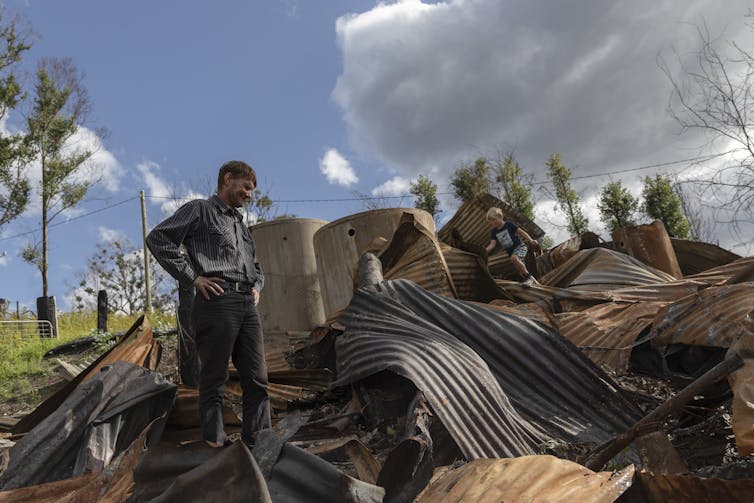In late 2019 and early 2020, a series of devastating wildfires, known as the "Black Summer" bushfire disaster, plunged Australia into trouble: more than 20% of the country's forests were burned.
As a scholar who studies the psychology of charitable giving, I have long been interested in the unique emotional responses triggered by disasters—often resulting in an urgent and visceral desire to help.
I wanted to understand how and why people responded to such a serious crisis. In this project I collaborated with three Australian experts in environmental psychology and collective action: Matthew Hornsey, Kelly Fielding and Robyn Gulliver .
We find that international media coverage of disasters helps increase donations. Our findings, published in 2022 in the peer-reviewed academic journal Disasters, are relevant to the Los Angeles situation. In January 2025, severe fires broke out in Los Angeles, destroying thousands of homes and businesses and devastating many communities.
This recovery could take years.
5 key factors that influence generosity
In total, Australian donors have donated more than US$397 million (approximately AU$640 million) to support recovery from the Black Summer bushfire disaster. The international community also came together: American and British donors contributed an additional $2.6 million. The donations are used to fund evacuation centers, victim support groups and cash grants for repairs and reconstruction, among other things.
When we surveyed 949 Australians about the factors that influence their donations and analyzed news articles about disasters, we found that coverage of disasters significantly increases generosity and affects which charities attract donations. This may be because news articles directly communicate the need for charitable support.
Using this survey data, we identified the key factors that influence how much, if anything, people donate to bushfire appeals. These five items relate to how much Australians donate:
• scale: The scale of the fire was huge.
• personal impact: Are personally affected, know someone who has been affected, or are concerned that they may be affected in the future.
• climate change beliefs: Believe that climate change is affecting the environment.
• news clips: Dramatic footage of the fire they saw.
• story:Stories of those affected.
Three of the factors—size, news clips, and stories—are related to the information people are exposed to when media reports on disasters occur. Additionally, when we asked people how they choose which charities to support, they said media coverage was more influential than their friends and family or direct communication from those charities.
Together, these findings demonstrate how media coverage can powerfully influence how much people donate to disaster relief and which nonprofits they choose to support.

set agenda
In the next phase of our research, we sought to understand how media coverage affects public generosity.
We downloaded all news articles about the disaster over a three-month period and analyzed the text of 30,239 news articles using linguistic query and word count software.
We looked at what types of language and concepts are used in media reports and how often they are used compared to how often they are used in everyday written language.
In addition to the concepts we expected to see (such as emergencies, heroes, and casualties), we found that the concepts of support and money also appeared frequently in the coverage. The words "donate," "help," and "support" appear in 74% of news articles. Money-related words are even more common: they appear almost twice as often as in ordinary written language.
Our findings suggest that news coverage may help shape the agenda for large-scale philanthropic responses to the Australian wildfire disaster because the media tells people what they should think about the disaster. In Australia's case, this is how they can help.
media considerations
We also argue that news coverage of such disasters is likely to play an agenda-setting role by teaching the public how to think about crises.
If news coverage emphasizes concepts such as support, potentially conveying that donating is a normal response to a crisis, then it is reasonable to expect people to donate more money.
Given that news coverage can influence how much someone donates and which charities they choose to support, nonprofits responding to the Los Angeles fires may want to encourage media outlets to mention their work in news coverage.
Appearing in news stories—especially when the article includes a call to action or an opportunity to donate—may raise more funds for charities responding to disasters.